How to select fishing gear accessories on Amazon?
第一步:获得新产品的灵感
这里指的是怎么去发现新产品,这需要卖家自己足够勤快,还要加上一点对市场的敏感度。可以通过亚马逊站内的Best sellers或New Release等模块去找,也可以通过facebook、youtube以及instagram等社交平台,也可以去1688等批发平台找,当然也可以通过参观线下的展会。
第二步:调研产品市场表现及潜力
当发现一款有意思的产品觉得可以做,我们就要去亚马逊平台进行市场调查。去调研该产品的市场表现如何,有多少卖家在销售;在售产品的好评和差评内容包括哪些,特别是差评内容的分析;还需要调研该产品的市场潜力如何,是红海产品还是蓝海产品等。
而在调研的过程中,我们最好使用一些数据分析工具,比如免费的google trends,付费的数魔或Jungle Scout等。用数据说话,而不是光凭自己的感觉拍脑袋选品。
第三步:明确产品成本及费用预算
好的产品是能够让我们挣钱的,所以我们要算清楚产品的成本及相关费用。包括产品采购成本、头程物流费用、FBA派送费用等。
比如有些产品市场潜力不错,但可能是重量轻体积大的产品,那么其产生的头程运费和FBA派送费用就会高,算下来之后利润可能被挤占了。
第四步:寻找供应商及商谈合作细节
做完前三步之后,如果觉得还可以继续,那么我们就需要寻找供应商,国内很多卖家基本都会去1688上寻找。找到供应商之后,我们最好选择两到三家拿样品看看,这个费用不能省。因为网上看到的图片和实际拿到的产品差距有可能非常大,只有对比之后才能做出正确的选择。
确认样品之后,就可以和供应商商谈合作细节了。比如价格是不是可以更优惠,是不是有阶梯价,包装是否可以改进,是不是可以帮忙贴标,是不是可以包邮等等。不同的供应商服务态度会不一样,能遇到一个产品好、服务也好的供应商就好好珍惜吧。
第五步:完善产品,推出新品
确定了样品和供应商之后,我们可以根据之前做的调研和供应商商讨改进细节,比如买家反馈的差评包括哪些,供应商是不是可以一一改进的。比如现在的包装是否OK,是不是可以换成质量更好的等等。
Professional answer
Step 1: Get inspiration for new products
This refers to how to discover new products, which requires sellers to be diligent enough and have a little sensitivity to the market. You can find them through modules such as Best sellers or New Release on Amazon, or through social platforms such as Facebook, YouTube and Instagram, or through wholesale platforms such as 1688, and of course, you can visit offline exhibitions.
Step 2: Research product market performance and potential
When we find an interesting product and think we can do it, we will go to the Amazon platform to conduct market research. We need to investigate the market performance of the product, how many sellers are selling it, what are the good and bad reviews of the products on sale, especially the analysis of the bad reviews, and the market potential of the product, whether it is a red ocean product or a blue ocean product.
In the process of research, we'd better use some data analysis tools, such as the free Google Trends, paid Shumo or Jungle Scout, etc. Let the data speak, instead of just choosing products based on your own feelings.
Step 3: Clarify product costs and expense budget
Good products can make us money, so we have to calculate the cost of the product and related expenses. Including product procurement costs, first-leg logistics costs, FBA delivery costs, etc.
For example, some products have good market potential, but they may be light and large in size, so the first-leg freight and FBA delivery costs will be high, and the profit may be squeezed out after calculation.
Step 4: Find suppliers and discuss cooperation details
After completing the first three steps, if you feel that you can continue, then we need to find suppliers. Many domestic sellers will basically go to 1688 to find them. After finding suppliers, we'd better choose two or three to get samples. This cost cannot be saved. Because the difference between the pictures seen on the Internet and the actual products you get may be very large, only after comparison can you make the right choice.
After confirming the samples, you can discuss the details of cooperation with the supplier. For example, whether the price can be more favorable, whether there is a tiered price, whether the packaging can be improved, whether you can help with labeling, whether it can be free shipping, etc. Different suppliers have different service attitudes. If you can find a supplier with good products and good service, cherish it.
Step 5: Improve products and launch new products
After confirming the samples and suppliers, we can discuss the improvement details with the suppliers based on the previous research, such as what the negative feedback from buyers includes, and whether the suppliers can improve them one by one. For example, whether the current packaging is OK, whether it can be replaced with better quality, etc.
Similar Q&A
recommend How to view sales of several months on Amazon?
E-c News Continuously pushing e-commerce knowledge to you

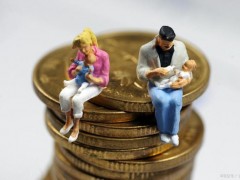
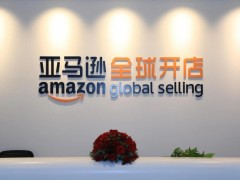
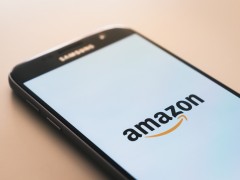
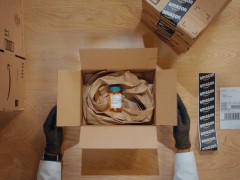
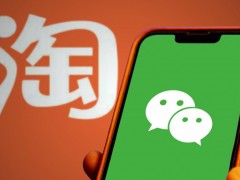
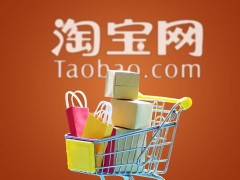

Latest Q&A More
-
Do I need a trademark to open a franchise store on Pinduoduo to sell books?
#Pinduoduo#
-
How to withdraw from a Pinduoduo store
#Pinduoduo#
-
How to withdraw from Pinduoduo merchants
#Pinduoduo#
-
How to pay fees when closing a Pinduoduo store
#Pinduoduo#
-
How to withdraw from Pinduoduo
#Pinduoduo#
-
Which store on Pinduoduo is authentic?
#Pinduoduo#
-
Which stores on Pinduoduo can buy genuine products?
#Pinduoduo#
-
How to check the store under Pinduoduo
#Pinduoduo#
-
How to receive Pinduoduo online game products
#Pinduoduo#
-
How to sell the electronic version on Pinduoduo
#Pinduoduo#
E-c News 2025-06-18 06:38:02

- African netizens use China Africa cross-border e-commerce platform for online shopping
- how is the new seller of cross-border e-commerce doing?
- how can cross-border e-commerce Amazon sell on Amazon platform without goods?
- Amazon store opening process and cost analysis!
- Amazon plans to expand its pharmacy business on a large scale and will add same day delivery service
